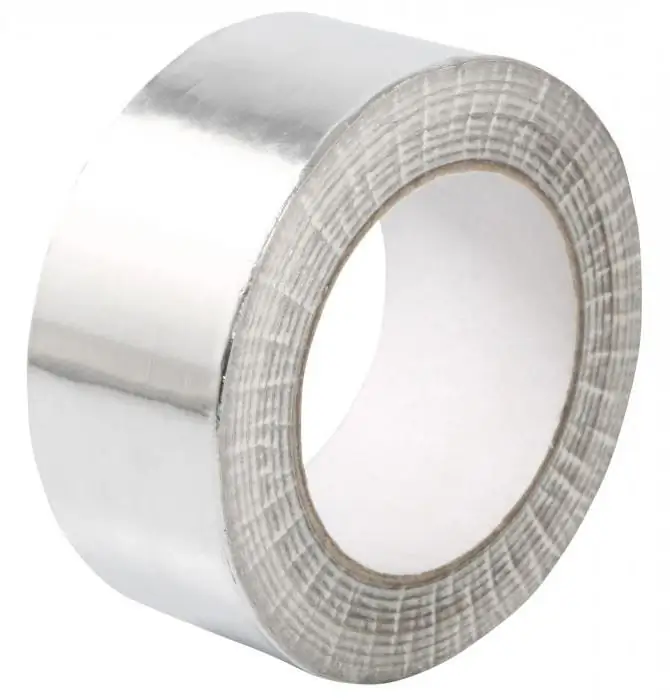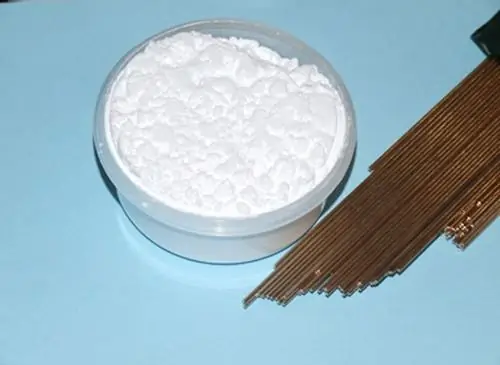2025 Author: Howard Calhoun | [email protected]. Last modified: 2025-01-24 13:10:30
Today, soldering is not the most common connection method, but it is still used quite often. Flux is always used for this operation. It can be not only purely rosin, but also a solution based on it. It's about alcohol-rosin flux.
Description
Here it is worth noting right away that the solution is completely neutral, does not cause metal corrosion. It can be left on after work.
Rosin itself was obtained from cuts of coniferous trees, after which all volatile elements from the composition were evaporated. The remainder occupied approximately 3/4 of the entire mass of the resin. Soldering rosin has always been used only after this preliminary operation.
Everything would be good enough if not for one significant drawback. After placing a hot soldering iron in resin flux, the working surface of the soldering iron became covered with dirt and became more difficult to work due to poor visibility.

Properties
Over time, it became clear that the use of liquidrosin as a flux is much more convenient. Due to the presence of natural acid-type resin substances, rosin has acquired the following properties:
- great for removing oxide from metal;
- spreads well on the surface;
- greatly covers the whole solder joint.
Ethyl or wine alcohol has been and is still used as a solvent to obtain such a composition. Thus, an alcohol-rosin flux (SKF) is obtained. There are several other organic solvents in which rosin dissolves well - these are acetone, benzene, gasoline.
However, today ethanol is most actively used for alcohol-rosin flux. According to its properties, isopropyl alcohol is closest to ethyl alcohol. However, the use of such a reagent has not become widespread, since it is much more difficult to obtain, and this can only be done through chemical manipulation.

GFR use
Alcohol-rosin flux has been used for a long time and very actively. It does not lose its relevance to this day, as it provides ease of use and acceptable results of soldering elements.
Using SKF can guarantee a fairly strong bond to a wide variety of materials, but works best with copper products. With the help of alcohol-rosin flux for soldering, you can work with radio circuits and other boards. Its main advantage in this case is good spreadability. This allows the flux to penetrate into the most inaccessible places. When working with this typerosin and elements applied low-melting solder - melting point up to 330 degrees Celsius.
Currently, you can easily purchase any solder for soldering. Alcohol-rosin flux (SKF) is one of these. Both domestic and foreign firms are engaged in production. You can buy such a flux ready-made. If the cooking process was not violated and the proportions were observed, then the composition will meet all expectations. However, you can cook it yourself.

How to make your own flux
Soldering alcohol-rosin flux can be made by hand. In fact, the cooking process only takes a few minutes.
First you need to take the resin and grind it thoroughly. The better this stage is carried out, the faster the dissolution of all substances in the solvent will then occur. As a result of such quick and modest manipulations, you can get an alcohol-rosin substance for soldering.
You can do it in another way. A piece of resin is wrapped in cloth. Cellophane can also be taken for these purposes, however, experienced home craftsmen warn that during the following manipulations it breaks very quickly. The rosin thus wrapped is placed on a table and smashed to a powder with a hammer. The most experienced solderers have adapted to use an ordinary manual meat grinder for this purpose.
Other do-it-yourselfers use a rolling pin or a thick bottle instead of a hammer to roll out a piece of rosin.
All these waysunites the same goal - it is necessary to grind the feedstock to a powder state.

Dilution in solution
After that, the resulting mass of powder should be poured into a bottle, vial, vial or other small similar container. Many people use nail polish containers. Here it is very important to get the hang of pouring out the dust in such a way that it does not crumble, you need to carefully and accurately pour the powder. After that, medical alcohol can be added to the same vial.
As for the ratio, the recommended ratio is 2:3 (liquid to powder).
In the event that you need to get a flux with a higher viscosity, you can increase the amount of resin, and leave the same amount of alcohol. It is worth noting that every home master is quite capable, after a couple of times, of independently selecting the ratios that are most suitable for his work, for those parts with which he interacts.
Is it possible to replace alcohol?
Some experienced crafters say that alcohol can be saved, if necessary, and replaced with cheap cologne. In fact, this recommendation is very controversial. The smell will, of course, be more pleasant, but extra additives can spoil or degrade the soldering quality.

Others talk about using vodka. Here, too, it is quite controversial, since rosin is an organic compound, and therefore it does not dissolve well in water. Vodka is a mixture of alcohol and water. Dissolve resineven in high-quality vodka it will be quite difficult.
Recommended:
Aluminum self-adhesive tape: properties, types, characteristics

Aluminum self-adhesive tape is a universal material for technical purposes, which is used both in everyday life and in construction
Self-supporting is Principles of self-supporting

Cost accounting is one of the tools that is used in solving social and economic problems. It involves the use of cost categories and indicators that are adequate to them
Dry alcohol - the history of appearance and application

Dry alcohol is a solid, non-smoking fuel that is used for cooking and heating food in field conditions, which is especially important for areas where natural fuel cannot be found (mountains, rocky ground, steppes, etc. )
Self-presentation: about yourself briefly and beautifully. Creative and beautiful self-presentation of the teacher

Today, presenting yourself to others is a daily necessity for each of us. Sometimes our partners are serious business people, sometimes they are casual acquaintances, but regardless of professions and age, we all would like to make only a positive impression
Flux for welding: purpose, types of welding, flux composition, rules of use, GOST requirements, pros and cons of application

The quality of the weld is determined not only by the ability of the master to organize the arc correctly, but also by the special protection of the working area from external influences. The main enemy on the way to creating a strong and durable metal connection is the natural air environment. The weld is isolated from oxygen by a flux for welding, but this is not only its task

